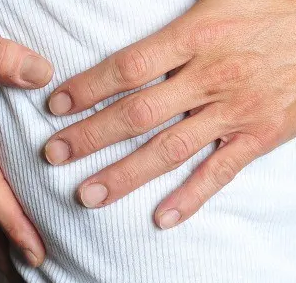Costochondral Junction Definition, Location, Pain, Fracture
A rib and its costal cartilage are connected at the costochondral joint. This joint is also known as the costochondral connection. It is a main cartilaginous joint, which means that it is immovable and does not permit mobility. The costochondral joints are positioned between the first ten ribs and their associated costal cartilages. They receive their supply from intercostal nerve branches, which are the thoracic spinal nerves' anterior rami. Intercostal muscles, which give rib cage support, are among the muscles that work at the costochondral joint.
When the costochondral joints become inflamed and painful, this condition is known as costochondritis. It may be brought on by injury or infection and result in chest pain that is sometimes misinterpreted as cardiac pain. Traditional treatments include bed rest, anti-inflammatory drugs, and physical therapy to alleviate discomfort and restore mobility.
Definition
The intersection of the costal cartilage and the bony portion of the rib is known as the costochondral junction. The costal cartilage is a form of hyaline cartilage that joins the ribs to the sternum (breastbone). The articulation of the costal cartilage with the rib bone creates this connection.

Location
The junction where the cartilaginous and bony portions of the ribs connect is known as the costochondral junction. It can be found in the frontal portion of the rib cage, at the point where the costal cartilage meets the rib bone. Particularly, it is the attachment point of the costal cartilage to the sternum, the breastbone found in the center of the chest. The costochondral junction, which is felt as a strong, bony protrusion running down the front of the chest, is crucial for giving the chest stability and mobility during breathing and movement.
Pain
The costochondral junction, which attaches the ribs to the breastbone (sternum) in the chest, can develop a benign swelling or inflammation called costochondritis. It accounts for 10–30% of chest pain complaints in children and adolescents.
Chest wall discomfort, which can range in severity from mild to severe and is frequently described as acute, painful, or pressure-like, is the main sign of costochondritis. Certain positions, like lying down, or pressure on the chest, such as being buckled in a car seat or hugging someone, might exacerbate the pain.
When other cartilage-damaging diseases, including osteoarthritis, rheumatoid arthritis, or ankylosing spondylitis, are present, costochondritis may be a symptom. Mild trauma and upper respiratory infections are other potential triggers.
Rest and over-the-counter painkillers like acetaminophen and ibuprofen are frequently used to treat costochondritis. A doctor may suggest physical therapy to help you get stronger muscles around the injured area. Costochondritis rarely necessitates surgery.
Fracture
When the front of the chest sustains trauma, whether, from a direct blow or an indirect twisting injury, the costochondral junction can fracture. Radiographs can be used to diagnose it. These images can demonstrate healing along costochondral junction rib fractures, as well as subperiosteal new bone formation, sclerosis, and growth. Costal cartilage fractures may also be identified with CT scans. In most cases, surgical stabilization of the fractured ribs is required as part of the treatment for this kind of injury.
 Reviewed by Simon Albert
on
February 16, 2023
Rating:
Reviewed by Simon Albert
on
February 16, 2023
Rating:











